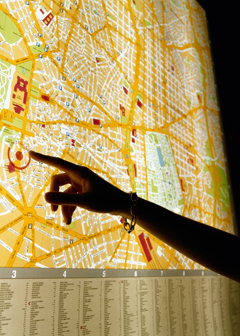Summary
Please enable javascript to play this video.
| Quick Facts: Cartographers and Photogrammetrists | |
|---|---|
|
$78,380 per year
$37.68 per hour |
|
| Bachelor's degree | |
| None | |
| None | |
| 13,400 | |
| 6% (Faster than average) | |
| 900 | |
What Cartographers and Photogrammetrists Do
Cartographers and photogrammetrists collect, analyze, and interpret geographic information to create and update maps and related products.
Work Environment
Although cartographers and photogrammetrists spend much of their time in an office setting, some jobs require travel to locations that are being mapped. Most work full time.
How to Become a Cartographer or Photogrammetrist
Cartographers and photogrammetrists typically need a bachelor’s degree in cartography, geography, geomatics, surveying, or a related field.
Pay
The median annual wage for cartographers and photogrammetrists was $78,380 in May 2024.
Job Outlook
Employment of cartographers and photogrammetrists is projected to grow 6 percent from 2024 to 2034, faster than the average for all occupations.
About 1,000 openings for cartographers and photogrammetrists are projected each year, on average, over the decade. Many of those openings are expected to result from the need to replace workers who transfer to different occupations or exit the labor force, such as to retire.
State & Area Data
Explore resources for employment and wages by state and area for cartographers and photogrammetrists.
Similar Occupations
Compare the job duties, education, job growth, and pay of cartographers and photogrammetrists with similar occupations.
More Information, Including Links to O*NET
Learn more about cartographers and photogrammetrists by visiting additional resources, including O*NET, a source on key characteristics of workers and occupations.
 United States Department of Labor
United States Department of Labor









